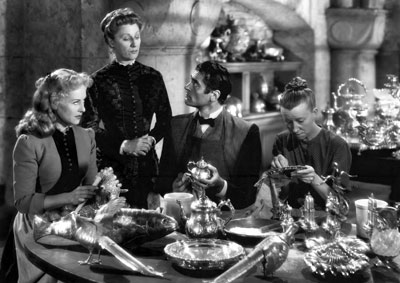Download a sample list of available titles and additional research resources at UCLA in PDF format.
In 1975, Jean Renoir was awarded an honorary Academy Award for his lifetime contribution to film. He is considered one of the first great auteurs, a cinematic master whose distinctive style always contained a concern for human issues and a reverence for natural beauty.
As the son of the great impressionist painter, Auguste Renoir, the filmmaker as a young man was encouraged to freely explore artistic and intellectual pursuits. He eventually chose ceramics, but during a long convalescence, developed a passion for film. He started his own production company in 1924, largely in order to launch the acting career of his wife, Catherine Hessling. His first film, La fille de l'eau (1925, The Whirpool of Fate), and other silent films display early signs of what was to become characteristic of Renoir's work—a sense of visual realism, the love of nature and the poetic representation of the physical environment. Film theorist André Bazin praised Renoir's early works for their modest use of camera movement and editing and emphasis on deep focus photography. Bazin argued that these techniques could lead the spectator to a more direct relationship with the landscapes and characters.
It was Renoir's "Popular Front" films of the late 1930s which brought him international acclaim. These films include such incontrovertible cinematic classics as Le Crime de M. Lange (The Crime of Mr. Lang, 1936), La bête humaine (The Human Beast, 1938), La règle du jeu (The Rules of the Game, 1939) and La grande illusion (The Grand Illusion, 1937).
Renoir lived in the United States in the 1940s and continued his career under contract to Twentieth Century-Fox. His films from the time period include This Land is Mine (1943) and The Woman on the Beach (1947). The UCLA Film & Television Archive has preserved The Southerner (1945) and Diary of a Chambermaid (1946).
Although Renoir considered his tenure in Hollywood a period of "unrealized works and unrealized hopes," The Southerner is a beautifully crafted story of a migrant worker who tries to start his own farm and who faces enormous hardship. Before Renoir returned to France, he travelled to India to make The River (1951). The film was made in Technicolor, and Renoir used this to explore the texture of the Indian landscape and culture.
To arrange onsite research viewing access, please contact the Archive Research and Study Center (ARSC).
Related resource: The Performing Arts Library Special Collections unit of the UCLA Libraries Special Collection holds various materials related to Jean Renoir in the Jean Renoir Papers collection.







